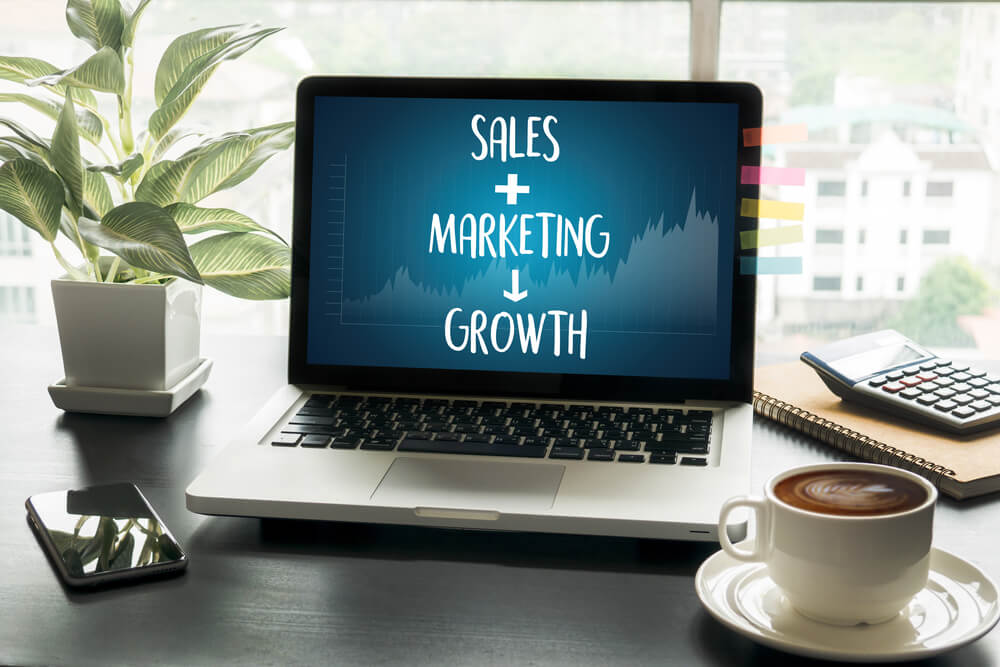
What Are the Main Parts of a Really Great Demand Strategy?
Before you can sell a product or service, you need demand. This requires the right combination of factors to successfully build.
This article highlights the essential parts a Chicago demand generation agency includes when building a customized strategy for your business:
- Sales pipeline and funnel.
- Collaboration between sales and marketing departments.
- Demand-generation objectives and metrics.
- Content and marketing channels.
- Opportunities and barriers.
Learn more about each below. Let’s go!
Are you looking for a full-service digital marketing agency? See the DAP difference below!
1. Sales Pipeline and Funnel
Although they may sound alike, your sales pipeline and funnel are not synonymous.
- The pipeline often illustrates the steps that your business undertakes to convert a prospect into a customer. In this case, it starts with demand generation and ends with a closed deal or a sale.
- The funnel emphasizes a customer’s buying journey. Brand and product awareness comes first, then interest. When options are available, they go through the consideration stage. If their interest is sustained, they can decide to buy a product and even become repeat customers.
Despite their differences, you can use both to develop a solid online marketing plan. For example, demand generation tactics are highly effective in creating awareness and interest, which are at the top of the funnel.
Demand generation also functions alongside lead generation, usually in the middle and later funnel stages. In particular, it simplifies and refines lead qualification.
2. Collaboration Between the Sales and Marketing Departments

Many businesses (and even marketers) mistakenly believe demand generation is solely the marketing department’s responsibility.
In reality, the best Chicago demand generation agency always collaborates with the marketing and sales departments. After all, they are part of the sales pipeline and impact many funnel stages.
This is evident in lead scoring and handoffs. They establish a lead scoring system that helps both teams prioritize prospects according to their chances of conversion.
Once a lead reaches a predetermined threshold, marketing should hand off the lead to sales for further nurturing and follow-up.
They are also a team in the following areas:
- Goal alignment. Sales and marketing teams can work together to analyze data and jointly build strategies addressing the customers’ pain points.
- Communication and transparency. Regular meetings, shared reports, and real-time collaboration tools can help facilitate open dialogue. This way, both teams consistently work toward the same goals.
- Lead generation. Together, they identify target audiences, develop buyer personas, and create tailored messaging that resonates with potential customers.
- Content development. Both leverage each other’s unique expertise and insights in developing content. Sales can provide valuable information on customer objections and frequently asked questions. Marketing can use this information to create relevant, compelling content.
3. Demand Generation Objectives and Metrics
Like any marketing aspect, demand generation is effective only when it has an intention, a direction, and methods of tracking its progress. In other words, it needs objectives and metrics.
The priority of demand generation is consistent brand awareness, interest, and engagement throughout the customer-buying journey. However, it can also be a means to achieve the following:
- Attract and engage potential customers, capturing their contact information for further nurturing.
- Encourage existing customers to purchase additional products or services, increasing customer lifetime value (CLV).
- Enter new markets or target new customer segments with your products or services.
- Establish your company as an authority in your industry, providing valuable insights and expertise.
These goals are not static. They change as your customers, business direction, and even macroeconomics shift. To determine whether existing strategies are ideal, working, or need refinement, use key performance indicators (KPIs).
These metrics can be qualitative or quantitative. Customer acquisition costs (CAC), cost per lead (CPLs), and CLVs have specific formulas. You can also track website traffic with analytics.
Alternatively, traffic from shares or discussions with friends is challenging to measure. Your firm may launch a simple survey such as “How did you hear about us?” This question helps identify the most cost-effective channels.
4. Content According to the Funnel

What is online marketing, especially brand awareness and engagement, without content? The problem is that many rely on one or two types for demand generation.
Although this approach works best before lead generation, your content should educate and engage leads. This puts your business top of mind for leads to consider or choose you once they are ready to purchase.
However, it is still beneficial for leading prospects deeper into the sales funnel. Because of this, your content should align with your marketing objectives and buying stage.
Suppose you are a software as a service (SaaS) firm, particularly a project management software developer. Your content marketing plan might look like this:
- Awareness. Use topic clustering to give C-suite executives ideas about your niche, their pain points, and potential solutions.
- Consideration. Demonstrate your firm’s expertise with content that discusses best practices and case studies of successful projects. Showcase customer success stories for other companies who have benefited from your software.
- Intent. Show the value of your product with features, reviews, and how-to articles that explain why your software is the best solution for businesses. Offer free trials to entice prospective customers to try out your product.
- Evaluation. Offer additional resources to help prospects make informed decisions. Create webinars, checklists, and free courses that educate customers on the benefits of your software.
- Purchase. Add calls to action and social proof to help customers decide. Provide discounts, coupons, and other incentives for prospects ready to buy.
- Retention. Reach out periodically with helpful tutorials. Create a feedback loop to gather customer opinions on improving the product.
5. Opportunities and Barriers
Your demand generation plan does not exist in a vacuum. It operates around several factors that you can take advantage of or mitigate.
For this reason, knowing your opportunities and barriers is essential to your strategy. These opportunities might include:
- New and growing market demand.
- Innovative solutions.
- New target segments.
- Partnerships.
- Digital channels.
On the other hand, challenges may be in the form of:
- Competition, making brand differentiation challenging.
- Limited resources.
- Complex sales cycle.
- Misalignment between sales and marketing teams, creating confusion, inefficiencies, and lost opportunities.
Summing Up
A truly great demand generation strategy is holistic. It covers the nitty-gritty that makes any marketing plan work, from a well-defined sales pipeline and funnel to understanding opportunities and barriers.
Mastering these elements effectively engages your target audience. It drives their interest in your offerings and accelerates revenue growth.
You can also elevate your business’s demand generation strategy by partnering with an expert. At Digital Authority Partners (DAP), a Chicago-based demand generation agency, we bring strategy, insights, and tactics to help you better align your sales and marketing teams. Contact us today for a consultation.
Want To Meet Our Expert Team?
Book a meeting directly here




